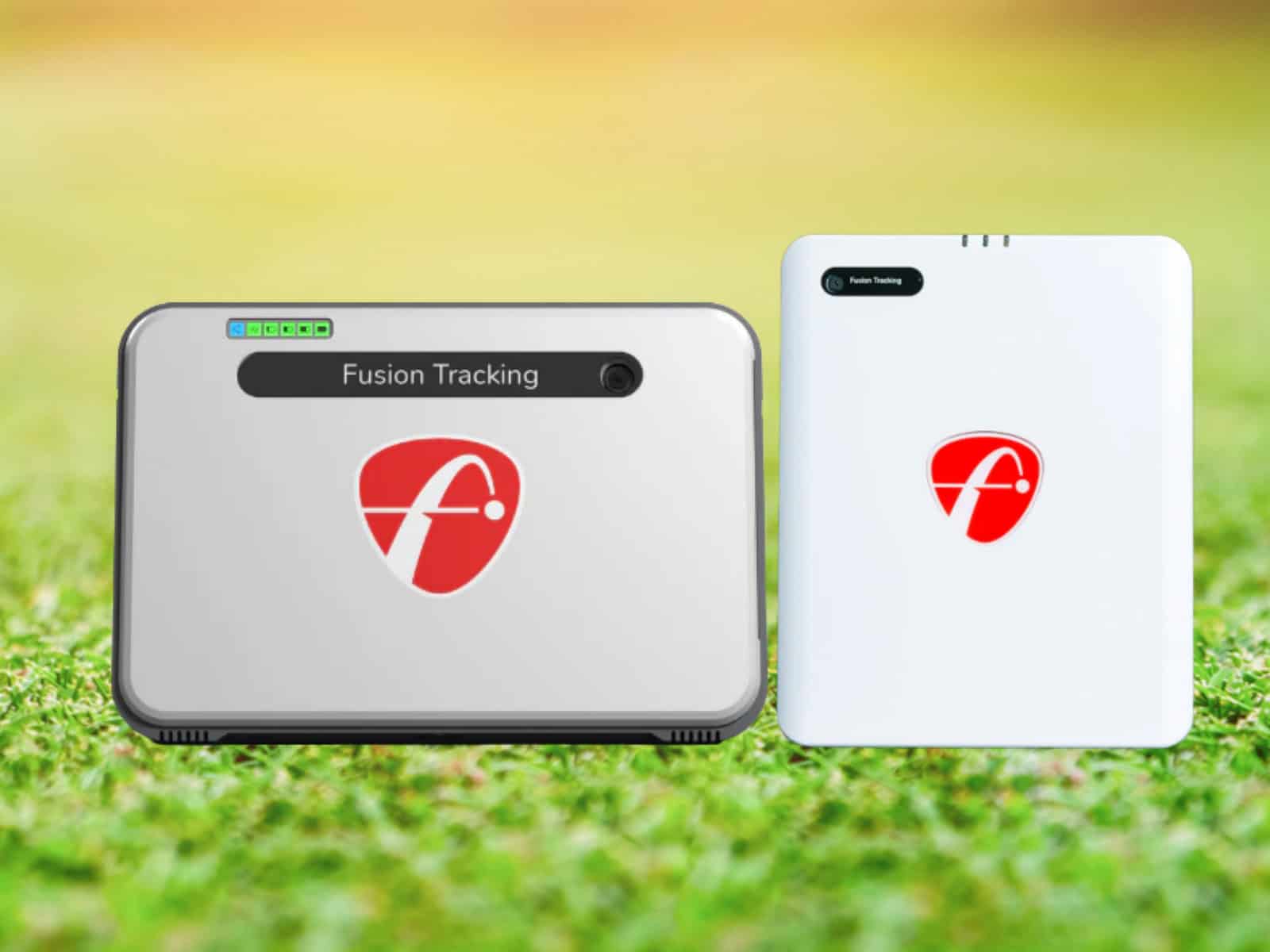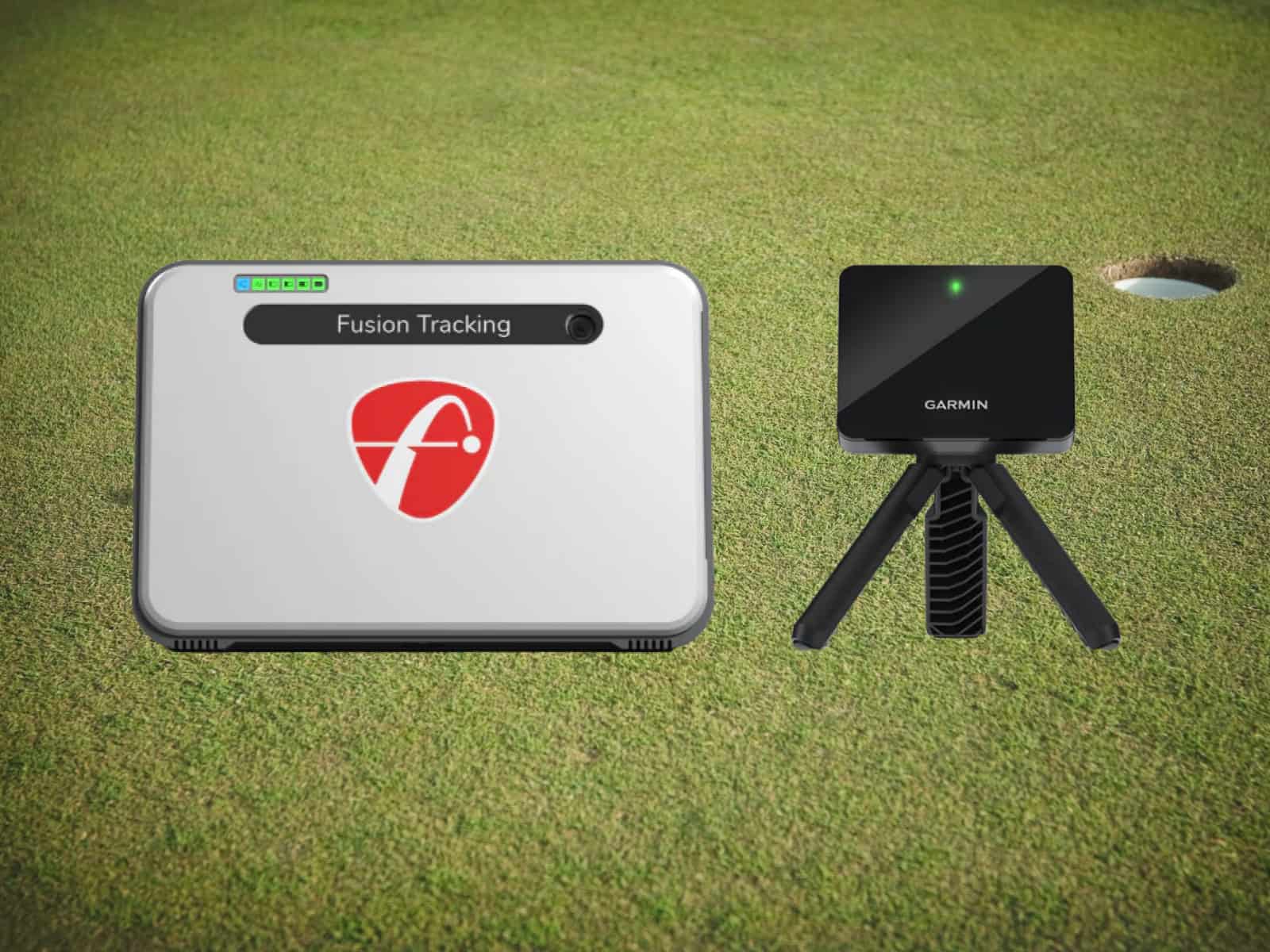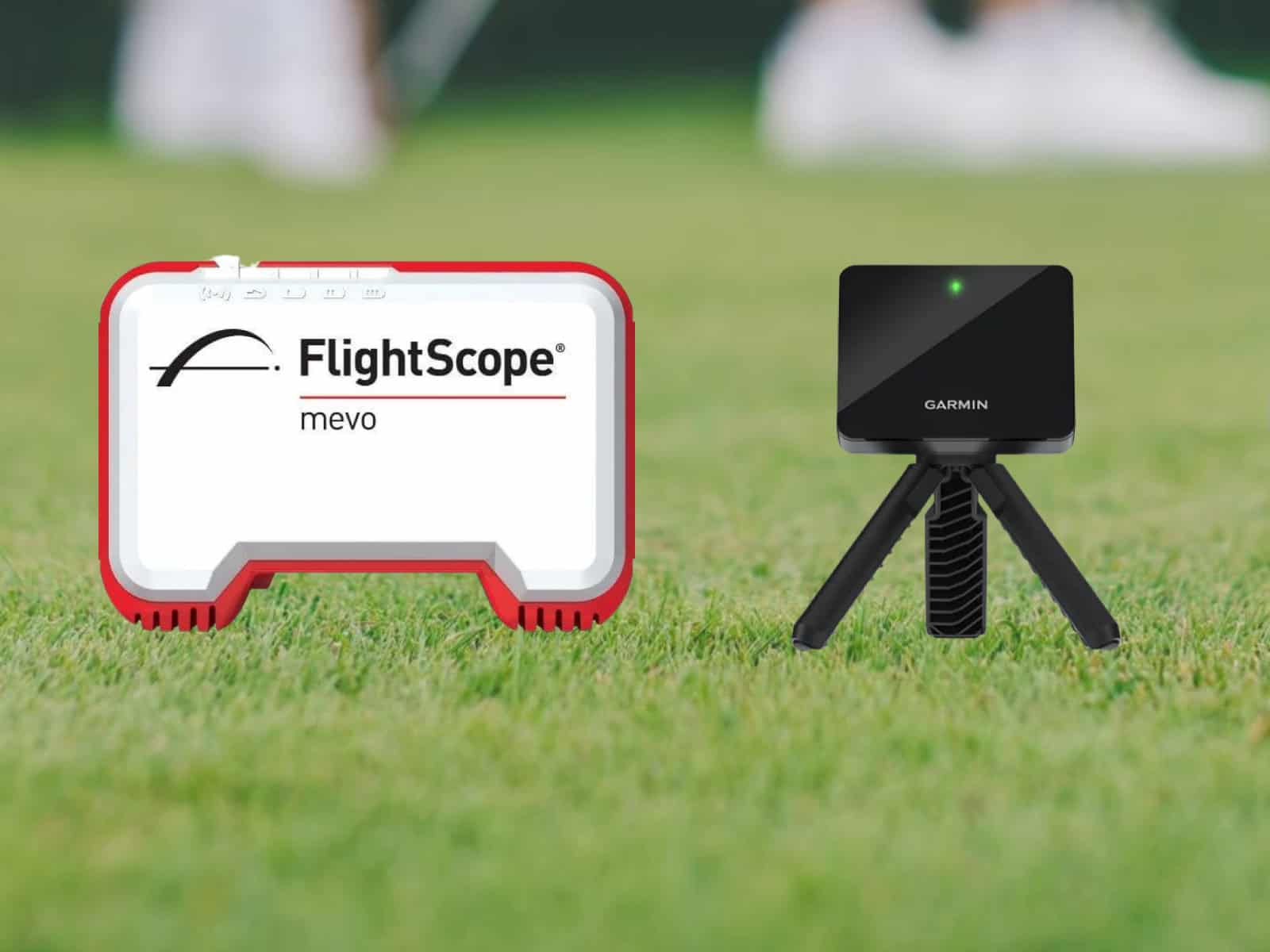Modern launch monitors, utilizing either radar or camera tracking technologies, provide essential data to help golfers improve their game. However, understanding the differences between these two technologies is crucial for selecting the right device.
This article provides a detailed comparison of radar and camera launch monitors, examining their strengths, weaknesses and ideal use cases. The purpose of the comparison is to provide a comprehensive evaluation of both tracking technologies. This way, you can easily choose which type best suits your needs. The comparison will cover various aspects such as accuracy, data points offered, ease of use, environmental considerations, cost, and portability.
Our ultimate goal is to equip you with the knowledge necessary to choose the right launch monitor for your specific requirements.
Understanding Radar Launch Monitors
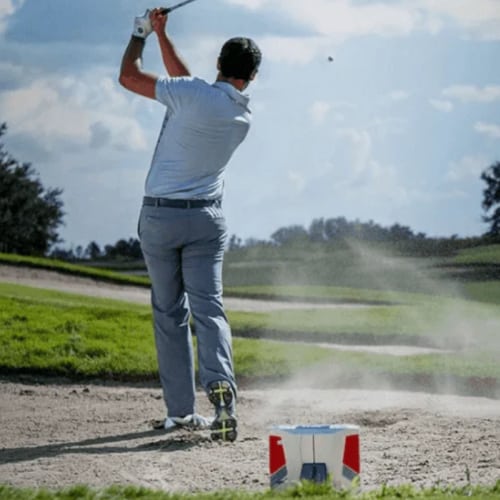
Radar technology in launch monitors operates using the Doppler effect, where the monitor emits microwave signals that reflect off the moving golf ball. The frequency change between the emitted and reflected signals is used to calculate the speed and trajectory of the ball.
This sophisticated technology captures a wealth of data points by analyzing these frequency shifts, providing insights into ball speed, launch angle, spin rate, and more.
Check out our curated list of the best radar-based launch monitors here.
Advantages of Using Radar Launch Monitors
The use of radar launch monitors offers numerous benefits:
- Accuracy in Outdoor Settings: Particularly effective in outdoor environments, where long-range measurements are critical.
- Detailed Ball Flight Analysis: This provides extensive data on ball flight characteristics, helping you understand the impact of your swing on ball behavior.
- Real-Time Feedback: Offers immediate data feedback, enabling quick adjustments and more effective practice sessions.
- Versatility: Suitable for various settings, from driving ranges to golf courses, enhancing their utility for different types of training.
Common Drawbacks of Radar Launch Monitors
While radar launch monitors are highly beneficial, they do have some limitations:
- Environmental Sensitivity: Performance can be affected by weather conditions such as wind and rain, potentially impacting data accuracy.
- Space Requirements: They typically require a larger open space to operate effectively, making them less suitable for indoor use.
- Higher Cost: Generally more expensive than camera-based systems, which can be a barrier for some users.
Understanding Camera Launch Monitors
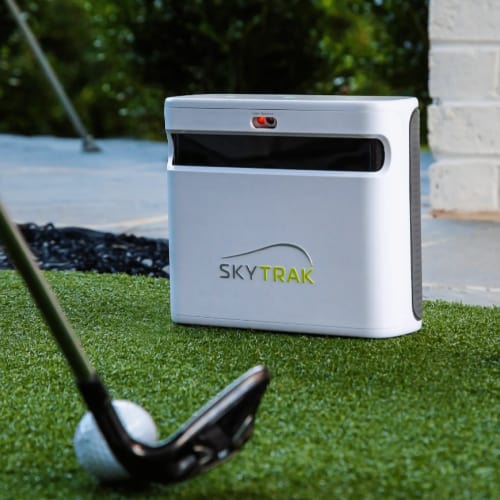
Camera launch monitors utilize high-speed cameras to capture detailed images of the golf ball and club during a swing. These cameras operate at high frame rates, often exceeding several thousand frames per second, to ensure precise capture of the ball’s movement and club dynamics.
Advanced algorithms then analyze these frames to extract critical data points such as ball speed, spin rate, launch angle, and more. The resulting data is processed to provide a comprehensive view of each shot.
Check out our picks of the best camera-based launch monitors here.
Advantages of Using Camera Launch Monitors
The benefits of using camera-based launch monitors include:
- Detailed Visual Analysis: Offers a visual breakdown of each swing, helping you identify and correct any technical flaws.
- Versatility: Suitable for use in a wide range of settings, from indoor practice facilities to outdoor ranges.
- Immediate Feedback: Instant data and video playback allow for quick adjustments and more productive practice sessions.
- Enhanced Swing Understanding: Visual aids help you better understand your swing mechanics and the resulting ball flight.
Common Drawbacks of Camera Launch Monitors
Despite their advantages, camera launch monitors have some limitations; here are a few examples:
- Lighting Sensitivity: Performance can be affected by lighting conditions, requiring consistent and adequate lighting for optimal accuracy.
- Complex Setup: Multi-camera systems can be more complex to set up and calibrate, potentially requiring more space and technical expertise.
- Data Processing Time: High-resolution data and video capture can result in longer processing times compared to radar-based systems.
Comparing Radar and Camera Launch Monitors
Let’s now compare the two tracking technologies over multiple aspects of their performance.
Accuracy and Reliability
Radar launch monitors are renowned for their accuracy, particularly in outdoor settings. They effectively track long-distance ball flights and provide detailed metrics on ball speed, spin rate, and trajectory. However, their performance can be influenced by environmental factors such as wind and weather conditions.
Camera-based monitors excel in capturing high-resolution images that offer precise data on ball launch and spin characteristics. They are particularly effective in controlled indoor environments, where lighting and conditions are optimal. The visual feedback provided by camera systems adds an extra layer of reliability in swing analysis.
Ease of Use and Setup
Radar systems typically require more space and a clear line of sight between the device and the ball. They can be more challenging to set up, particularly for novice users. However, many modern radar monitors come with user-friendly interfaces and software that simplify the setup process.

Camera-based systems are often more straightforward to set up, especially in indoor environments. They require proper lighting and positioning of cameras but generally involve less hassle compared to radar systems. The integration with software for immediate visual feedback makes them user-friendly and accessible.
Environmental Considerations
Radar launch monitors and camera launch monitors have distinct environmental considerations that impact their performance and usability. Radar launch monitors are highly sensitive to weather conditions such as wind and rain, which can affect the accuracy of the data they collect. They are best suited for outdoor use where ample space is available, allowing for optimal performance and minimizing potential interference from surrounding objects.
On the other hand, photometric launch monitors have specific lighting requirements to function effectively. They perform optimally under controlled lighting conditions, ensuring that the captured images are clear and accurate. However, camera launch monitors offer greater versatility in terms of usability, as they are suitable for both indoor and outdoor use. The key factor is ensuring that the environment is well-lit and free from obstructions that could hinder the camera’s ability to capture precise images of the ball’s flight path.
Cost Comparison
Radar launch monitors are generally more expensive than their camera-based counterparts due to the advanced radar technology they employ. However, for serious golfers and professionals, the high-end investment in a radar launch monitor can offer long-term value. These devices provide extensive data points and exceptional durability, making them a worthwhile investment for those who require the most comprehensive and accurate performance analysis.
Camera launch monitors, on the other hand, are available at various price points, with some high-quality models being more budget-friendly than radar systems. Despite the lower cost, camera launch monitors still provide detailed visual and data feedback, offering excellent value for money. This makes them an attractive option for golfers who seek in-depth performance analysis without the higher price tag associated with radar technology.
Portability and Durability
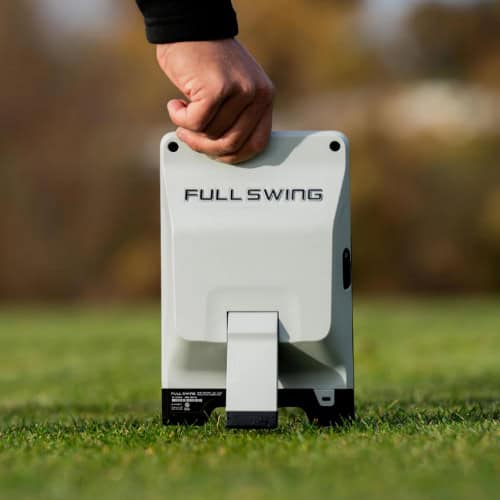
Camera launch monitors are generally more compact and easier to transport than radar launch monitors, making them a convenient choice for golfers who value portability (there are exceptions, of course). These devices are best suited for indoor use, where they are protected from the elements and can operate in controlled environments. When used indoors, camera launch monitors offer durability and reliable performance, ensuring that golfers can consistently track their progress and analyze their shots.
Radar launch monitors, while often designed with portability in mind, may require additional accessories to ensure stability during outdoor use. However, these devices are built to withstand outdoor conditions, making them robust and long-lasting. The durable construction of radar launch monitors allows them to withstand the rigors of regular use in various weather conditions, ensuring that you can rely on their accuracy and performance over time, even in challenging outdoor environments.
Use Cases and User Preferences
When it comes to selecting the ideal launch monitor, it’s essential to consider the specific needs and preferences of different user groups. In this section of the article, we’ll explore how radar and camera launch monitors cater to the unique requirements of professional golfers, amateur golfers, golf instructors, and coaches, as well as their suitability for indoor and outdoor use.
Professional Golfers
For professional golfers, accuracy and reliability are paramount. They require launch monitors that provide the most precise data to fine-tune their swings and optimize their performance. Many pros prefer radar launch monitors. The consistency and repeatability of radar technology make it a trusted choice among elite players.
However, some professional golfers may opt for camera launch monitors, especially when focusing on specific aspects of their swing, such as impact position and clubface orientation. The visual feedback provided by camera systems can be useful for identifying and correcting subtle swing flaws.
Amateur Golfers
Amateur golfers have diverse needs and budgets when it comes to launch monitors. For those serious about improving their game, a radar launch monitor can offer a wealth of data to analyze their swings and track their progress. The portability of radar systems allows amateurs to use them at the driving range or on the course.
Camera launch monitors can be an attractive option for amateurs who prioritize ease of use and visual feedback. The ability to see their swing in slow motion and receive instant feedback can be incredibly helpful for self-diagnosis and improvement.
Golf Instructors and Coaches

Golf instructors and coaches rely on launch monitors to provide objective data and insights for their students. Radar launch monitors are often the preferred choice due to their accuracy and the breadth of data they provide. Instructors can use this data to identify areas for improvement and create personalized training plans.
However, camera launch monitors can be valuable teaching tools as well. The visual feedback they offer allows instructors to demonstrate swing mechanics and help students understand the impact of their movements on ball flight. Camera systems can also be more engaging for students, as they can see their swings in real-time and in slow motion.
Expert Reviews and Testimonials
When considering the purchase of a launch monitor, it’s essential to take into account the opinions and experiences of those who have used these devices extensively. That’s why we decided to include feedback from professional golfers and golf instructors to provide a comprehensive understanding of how radar and camera launch monitors perform in real-world situations.
Insights from Professional Golfers
Professional golfers rely on launch monitors to optimize their performance and gain a competitive edge. Many top players have shared their thoughts on the benefits and drawbacks of radar and camera launch monitors.
For example, PGA Tour player Bryson DeChambeau is known for his scientific approach to the game and has spoken highly of radar launch monitors. He appreciates the accuracy and consistency of the data provided by these devices, which allows him to make precise adjustments to his equipment and swing.
Conversely, some professionals, such as former world number one Rory McIlroy, have praised camera launch monitors for their ability to provide visual feedback. McIlroy has mentioned that seeing his swing in slow motion helps him identify and correct any flaws in his technique.
Feedback from Golf Instructors
Golf instructors play a crucial role in helping players of all levels improve their game, and launch monitors are essential tools in their arsenal. Many instructors have shared their experiences with radar and camera launch monitors, highlighting the strengths and weaknesses of each technology.
Renowned golf coach Butch Harmon has spoken positively about radar launch monitors, noting their reliability and the wealth of data they provide. He believes that the objective information gathered by these devices helps his students understand their swings and make data-driven improvements.
However, other instructors, such as David Leadbetter, have emphasized the importance of visual feedback in the learning process. Leadbetter has praised camera launch monitors for their ability to provide students with a clear visual representation of their swing, making it easier to identify and address issues.
Frequently Asked Questions
When considering the purchase of a launch monitor, many golfers have questions about the differences between radar and camera technologies, their accuracy and how to choose the right device for their needs. Here, we’ll address some of the most frequently asked questions related to the topic.
What is the main difference between radar and camera launch monitors?
The primary difference between radar and camera launch monitors lies in the technology they use to capture data. Radar launch monitors emit high-frequency radio waves that reflect off the golf ball and club to measure various parameters, while camera launch monitors use high-speed cameras to capture images of the ball and club at impact, which are then analyzed to provide data on ball flight and club performance.
Are radar launch monitors more accurate than camera launch monitors?
Both radar and camera launch monitors can provide accurate data when used correctly. However, radar launch monitors are generally considered to be more accurate and consistent in their measurements, particularly for outdoor use.
This is because radar technology is less affected by lighting conditions and can track the ball for a longer distance. Camera launch monitors can be highly accurate in controlled indoor environments but may face challenges in outdoor settings due to sunlight and shadows.
Can I use a launch monitor indoors and outdoors?
Most radar launch monitors can be used both indoors and outdoors, as they are not significantly affected by lighting conditions. However, it’s essential to ensure that there is enough space for the radar to track the ball flight accurately. Camera launch monitors are typically better suited for indoor use, where lighting can be controlled, and the background is more consistent.
Some camera systems may struggle to capture accurate data in bright sunlight or when there are shadows in the hitting area.
That said, modern technology has truly blurred the line between the two, to the point that most launch monitors, especially premium offerings, excel in both indoor and outdoor settings, regardless of their technology.
How do I choose the right launch monitor for my needs?
When selecting a launch monitor, consider your specific requirements and budget. If you are a professional golfer or serious amateur looking for the most accurate and comprehensive data, a high-end radar launch monitor may be the best choice. If you prioritize visual feedback and ease of use, a camera launch monitor could be a better fit.
Consider factors such as portability, durability and the specific data points you need to analyze your game. It’s also helpful to read reviews from other users and consult with golf professionals to get their suggestions.
What are the maintenance requirements for launch monitors?
The maintenance requirements for launch monitors vary depending on the specific model and technology. In general, radar launch monitors require minimal maintenance, as they have few moving parts and are designed to withstand regular use.
However, it’s essential to keep the radar unit clean and protect it from moisture and extreme temperatures.
Camera launch monitors may require more frequent calibration to ensure accurate data capture, and the cameras and lenses should be kept clean and free from dust and debris.
Always follow the manufacturer’s guidelines for care and maintenance to ensure the longevity and accuracy of your launch monitor.
Conclusion
When choosing between radar and camera launch monitors, prioritize your specific requirements and goals. Radar launch monitors offer accuracy and consistency, while camera launch monitors provide visual feedback and swing analysis. Consider factors such as intended use, budget and portability. It’s also worth noting that some launch monitors allow you to analyze your swing without hitting any balls.
Now that you’re familiar with the two main launch monitor technologies, you’re well-equipped to make an informed decision. To explore in detail the top-rated launch monitors for golf, refer to our comprehensive guide on launch monitors that dives into cost, performance, software, size, and durability factors.
We hope that our guide managed to clarify things and that now you can choose the best tracking technology for your needs. Just keep in mind that modern technology has made both types perfectly usable both indoors and out (with some small distinctions still persisting). If you have any questions, don’t hesitate to contact us.
Thanks for reading!



